
|
|
|
|
|
|
2031-2045
Cargo Sous Terrain becomes operational in Switzerland
Cargo Sous Terrain (CST) is an underground, automated system of freight transport that becomes operational in Switzerland from 2031 onwards.* It is designed to mitigate the increasing problem of road traffic, which has grown by 45% in the region since the mid-2010s. This tube network, including the self-driving carts and transfer stations, is built at a cost of $35 billion and is privately financed.
The first section runs from Härkingen-Niederbipp to Zurich and is around 70 km (43 mi) in length, with 10 hubs between the two regions. This is followed by additional tunnel sections and 80 hubs, eventually spanning the entire width of the country by 2045.*
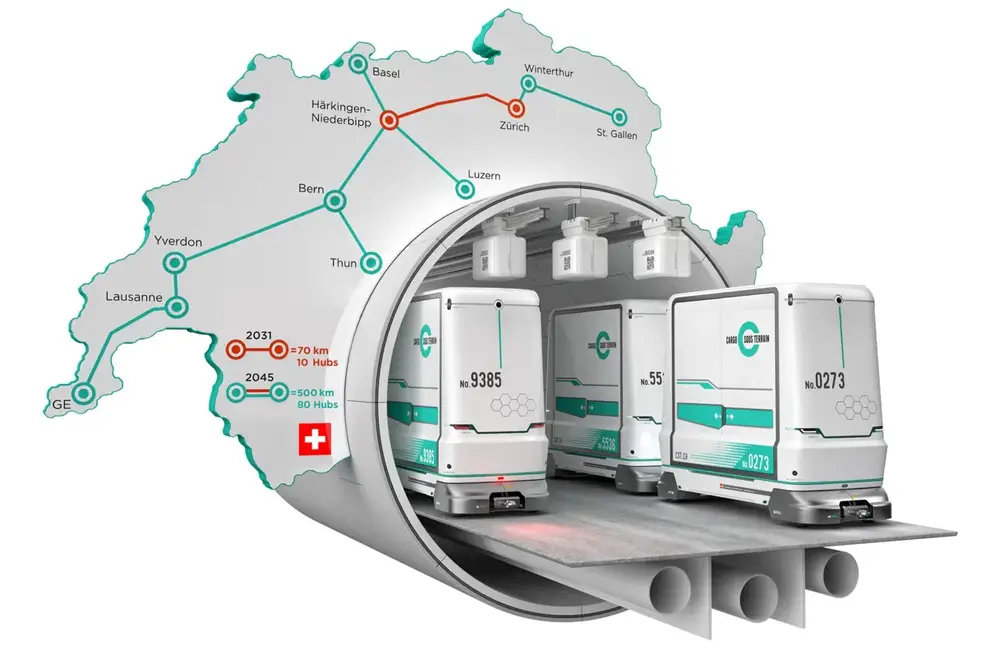
Above-ground waystations with vertical lifts enable the rapid transfer of cargo. Each vehicle is refrigeration-compatible, meaning that fresh and chilled goods can be handled, such as food and medical supplies. As well as deliveries from production and logistics sites to urban centres, the CST can be used for the movement of recycling and waste products.
The entire project is powered by renewables. The vehicles are propelled by electromagnetic induction and run at 19 mph (30 km/h), operating for 24 hours a day, which includes fully automated loading and unloading. An additional monorail system for carrying packages, in the roof of the tunnel, moves at twice this speed. Cargo Sous Terrain allows goods to be delivered more efficiently, at more regular intervals, while cutting both air and noise pollution, as well as reducing the burden of traffic on overground roads and freight trains.*
2031-2035
Jupiter Icy Moons Explorer (JUICE) explores the Jovian system
Jupiter Icy Moons Explorer (JUICE) is a mission by the European Space Agency (ESA) to explore the Jovian system, focussing on the moons Ganymede, Callisto and Europa. Launched in 2023, the craft goes through four gravity assists (Earth, Venus, Earth, Earth), before reaching Jupiter in 2031.*
For its primary objective, the probe performs a series of flybys around some of the largest Galilean moons – Ganymede, Callisto and Europa, all of which are believed to hold subsurface liquid water oceans. As a secondary objective, it also studies Jupiter's atmosphere and magnetosphere, gaining valuable insight into how the gas giant might have originally formed.
The main science goals for Ganymede, and to a lesser extent for Callisto, are:
- Characterisation of the ocean layers and detection of putative subsurface water reservoirs
- Topographical, geological and compositional mapping of the surface
- Study of the physical properties of the icy crusts
- Characterisation of the internal mass distribution, dynamics and evolution of the interiors
- Investigation of Ganymede's tenuous atmosphere
- Study of Ganymede's intrinsic magnetic field and its interactions with the Jovian magnetosphere
For Europa, the focus is on the chemistry essential to life, including organic molecules, and on understanding the formation of surface features and the composition of non-water-ice material. Furthermore, JUICE provides the first subsurface sounding of the moon, including the first determination of the minimal thickness of the icy crust over the most recently active regions.
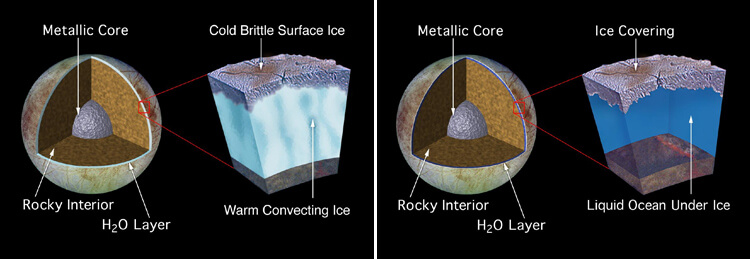
Two possible models of Europa. Credit: NASA
JUICE begins at Ganymede, the largest moon in the Solar System, which it swings past at close range in July 2031. Several hours after this manoeuvre it prepares for orbital insertion at Jupiter itself. This highly elongated first orbit is followed by another Ganymede flyby, then further studies of Jupiter, with orbits around the planet becoming less elongated and more circular.
JUICE flies past Europa in July 2032, and Callisto in the same month. It then begins a "high inclination" phase to allow exploration of Jupiter's polar regions and to study the gas giant's magnetosphere. It also observes moon transits, i.e. moons and their shadows as they pass in front of Jupiter.
In December 2034, the spacecraft returns to Ganymede and enters into orbit (as opposed to a flyby), becoming the first spacecraft to orbit a moon other than Earth's moon. This complicated manoeuvre allows it to come within 500 kilometres (310 mi), returning very close-range images of the surface. It also features a laser altimeter with 20 metre (66 ft) spot size and 10 centimetre (3.9 in) vertical resolution, revealing tidal deformations of Ganymede. With its fuel running out, JUICE is deorbited and impacts the surface of Ganymede in late 2035.
This mission, among ESA's most significant of recent years, provides a wealth of empirical data and new insights into the Jovian system. As well as improving the general scientific understanding of the Galilean moons, JUICE also enables mission planners to determine potential landing sites for surface probes in the future. Indeed, preparations are now getting underway to further explore Europa in the 2035-2050 timeframe.
2031
Generative AI is a trillion-dollar market
The early beginnings of generative AI – a subset of artificial intelligence for creating new content or data models based on existing datasets – could be traced back to the broader evolution of neural networks and the subsequent rise of deep learning. While the foundational concepts of neural networks first emerged in the mid-20th century,* it took until the 2010s for certain forms of generative AI to begin making notable strides, largely propelled by exponential advances in computational power, algorithms, and the availability of vast datasets.
Generative adversarial networks (GANs) marked a major milestone in the field when first demonstrated in 2014. In a GAN, two neural networks are given a training set of images and then made to "compete" with each other to create brand new ones. This process is repeated, rapidly improving with each cycle, resulting in a final image that is often indistinguishable from an existing object, person, or scene. The public became aware of GANS via content on websites like "This Person Does Not Exist", which created realistic human faces.*
Even greater advancements emerged with large language models (LLMs), such as the GPT series. With 175 billion parameters, GPT-3 demonstrated a remarkable ability to generate human-like text across diverse tasks with minimal fine-tuning. Its versatility made it suitable for tasks ranging from writing essays to coding in various web languages. Version 3.5 became publicly available in late 2022 as ChatGPT, followed by the more powerful GPT-4.
Alongside the LLMs, multimodal models showed that generative AI could be applied to several different areas at the same time – combining realistic and coherent text, images, music, voices, and even video. The complexity of these models led to speculation about the arrival of the first artificial general intelligence (AGI). However, concerns also arose over the use of such technology to generate fake news and other harmful content, as well as its potential to make many traditional human jobs obsolete.

In July 2023, the Screen Actors Guild – American Federation of Television and Radio Artists (SAG-AFTRA), a labour union representing 160,000 media professionals worldwide, began a strike against major TV and film studios in protest of low compensation, ownership of work, and generative AI.
But the march of technology could not be stopped. With each new advance, generative AI drove down the costs of production, decreased the time required to create content, and empowered both individuals and small enterprises to access tools once exclusive to large corporations. The democratisation of this technology around the globe allowed even those without specialised skills or knowledge to harness its power.
In the second half of the 2020s, AI-powered personal assistants became capable of generating entire new movies. With just a few simple voice commands, a film could now be made, based on the user's own personal tastes and preferences. A comedy of 90 minutes duration, for example, perhaps even featuring a deepfake of the user themselves and their friends, along with specific themes or settings.* Although initially a premium service, this capability declined rapidly in cost and soon led to widespread availability of personalised, auto-generated movies.
By 2031, the market for generative AI has seen a nearly 50-fold increase compared with a decade earlier, growing from $23bn to over a trillion dollars annually* – revolutionising industries such as entertainment, advertising, design, journalism, and gaming.
Video games now frequently include AI-generated narratives, which adapt to a player's choices in real-time. Movie scenes can be quickly and easily edited to optimise virtual actors (such as increasing or decreasing the intensity of a certain emotion, without needing a real human to re-enact a scene).
Many schools and colleges are now integrating generative AI into their curricula and courses, not just for computer science, but also creative subjects like art, literature, and music. It can also produce customised learning materials for students, catering to their pace and level of understanding. Virtual teachers can provide students with 24/7 support whenever needed.
Workspaces continue to evolve, with AI increasingly prevalent as a co-worker, collaborator, and tool that amplifies human creativity and productivity. It has transformed numerous other fields including architecture, engineering, fashion, healthcare, and urban planning.
To address the misuse of generative AI (e.g. for deepfakes), many control mechanisms and ethical guidelines have now been established. This includes better detection methods for AI-generated content and inherent safeguards.
The International Space Station is deorbited
The International Space Station (ISS), which first became operational in November 2000, has now reached the end of its lifespan. Originally intended to last for only 15 years, it continued to defy expectations through the late 2010s and into the 2020s. Multiple extensions of the planned time in orbit, along with additional modules and upgrades, meant that it would endure for twice the length of its earlier timeline.
By far the largest human-made object in space, the ISS was visible to the naked eye from Earth as it completed its 16 daily orbits, varying between 418 km and 422 km above the Earth's surface. With its microgravity environment, the ISS yielded breakthroughs in medicine and biotechnology, materials science, and other areas of research. It helped to monitor Earth's ecosystems and natural disasters in real time. It also provided testing of future spacecraft technologies and a place to study the health effects of long-term space flight – essential for enabling the future human exploration of the Solar System.
However, the ISS accumulated damage over the long term, with solar radiation and temperature extremes gradually taking their toll. The daily expansion and contraction of materials, charring of glass, repeated docking and undocking of spacecraft, all weakened the station's integrity. High-speed collisions with space junk also posed a significant and growing threat.
A previous plan by NASA had proposed ending the ISS by 2028. But in 2022, the Biden administration extended this timeline to 2031. The ISS would be steered towards a remote part of the Pacific Ocean known as Point Nemo, a spacecraft "graveyard" and the furthest known location from civilisation.
In late 2030, the ISS is gently decelerated by onboard thrusters, causing its altitude to gradually decrease over the course of a few months. The final part of the descent is much faster and occurs in January 2031.* As it re-enters the atmosphere, the large solar arrays are the first components to burn away, followed by the upper modules and then the remaining structure below. The ISS is four times the size of Mir, which underwent a similar manoeuvre in 2001.
As of 2022, NASA had spent $3.1 billion a year on the space station program, with more than $1.3 billion going to operations of the station and research performed there, and $1.8 billion on crew and cargo transportation. The retirement of the station therefore provides major cost savings for NASA and enables the agency to focus on other areas.
By 2031, commercial space platforms are replacing the ISS as a venue for scientific research and collaboration. Another major deorbit occurs the following year when China retires Tiangong, its national space station.
DAVINCI+ lands on Venus
DAVINCI+ is a robotic spacecraft sent to investigate the atmosphere of Venus, as part of NASA's Discovery Program. Having launched in 2029 and performed a series of flybys, it deploys a lander in 2031 – the first since NASA's Pioneer Venus in 1978 and the USSR's Vega in 1985.
During its 63-minute descent by parachute, this sphere-shaped probe samples the air, taking measurements of its chemical composition and other properties down to the surface. This data, 10 times more detailed than any previous mission, helps in understanding the atmosphere's origin, how it has evolved over time, and how and why it is different from those of Earth and Mars. It determines the history of water on Venus, such as the presence of oceans in the past, as well as previously unknown processes at work in the lower atmosphere.
Before it reaches the surface, the DAVINCI+ probe takes the first ever high-resolution photos of the planet's intriguing, ridged terrain ("tesserae") to explore its origin alongside tectonic, volcanic and weathering history. This camera, the Venus Descent Imager (VenDI), is similar to the Mars Descent Imager (MarDI) and reveals the surface of Venus in stunning, never-before-seen detail.
The probe's other instruments include two spectrometers to obtain the first detailed in situ surveys of noble and trace gases and associated isotope ratios, alongside an "atmospheric structure investigation" to measure the dynamics of the Venusian atmosphere during entry and descent.
All of these findings help scientists understand why Venus and Earth took such different paths as they matured, providing another point of comparison for studies of rocky exoplanets. A sister mission, VERITAS, is also taking place at Venus during this time, with a focus on mapping and geology.
Credit: NASA
Completion of a Morocco-UK undersea power cable
Xlinks is a clean energy megaproject to allow the transfer of solar and wind power from Morocco to the UK. The electricity is delivered via an undersea cable measuring 3,800 km (2,400 miles). This makes it one of the world's longest, second only to the Australia–ASEAN Power Link developed in 2027.
As a country with plentiful sunlight and wind resources, Morocco had shown major potential for renewable energy generation. In 2016, it constructed the 510 MW Noor Power Station, the world's largest concentrated solar power facility. It also invested heavily in wind power, with several large wind farms constructed including the 301 MW Tarfaya Wind Farm in the country's southwest.
As Morocco made strides towards its goal of 52% of electricity from renewable sources by 2030, even larger projects began to materialise. These created up to 28,000 new jobs each year,* lowering Morocco's high unemployment rate, and reducing the country's dependence on fossil fuels. Although it prioritised the supply of clean energy to its own people, opportunities emerged for exports to foreign partners.
Xlinks, a UK startup founded in 2018, secured a deal with the Moroccan government for an area of 1,500 km2 (580 sq mi) in the African country, on which solar and wind farms would be built and combined with battery storage, for export to the UK. Xlinks had the financial backing and leadership of major names in the energy sector. With a cost estimated at £18bn ($22.6bn), the project moved forward in the early 2020s with feasibility studies, surveys, and permit applications, for both the land facilities and the submarine cable.
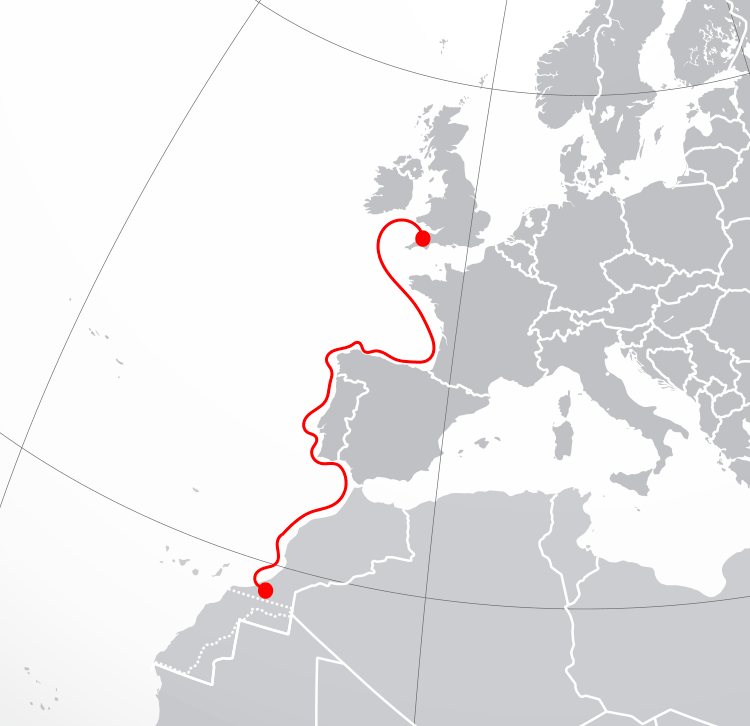
Credit: Bearas, CC BY-SA 4.0, via Wikimedia Commons
The wind and solar farms would be placed in a central part of Morocco with excellent weather and geographical advantages. This desert location featured some of North Africa's best solar irradiance, along with consistently strong winds blowing from the north and northwest, and mountain ranges inland from the coast to concentrate the wind and provide some of the highest onshore wind power densities in Africa.
The solar power plants would generate electricity during daylight hours, and the PV panels would move to track the Sun to increase their output in the morning and the evening. Meanwhile, the prevailing winds blew most strongly in the afternoon and early evening. These generating characteristics, combined with batteries for back-up, would allow the cable to run at full capacity for 20 out of 24 hours each day.
Because of the power cable's extreme length, transmission losses would be relatively high at 13%. But overall, thanks to seasonal consistency, three times more solar energy could be produced than in the UK and the wind power could be reliable even during low winds in Europe. Furthermore, with a strike price of approximately £48/MWh, it would be far cheaper than next-generation nuclear power plants, such as Hinkley Point C (£92.50/MWh).
The Xlinks Morocco-UK Power Project (to give its full title) is gigantic in scale, with 12 million solar panels and 530 wind turbines. It creates 10.5 GW of new renewable generation, which includes 3.6 GW of reliable, flexible baseload. This is enough to supply 8% of the UK's electricity requirements. Four HVDC cables run for thousands of kilometres through the Atlantic, before arriving at National Grid connection points near the coast of Devon, England. The project creates 10,000 new jobs in Morocco and 1,350 in the UK. A first phase becomes operational in 2029, which is followed by completion of the battery facilities in 2031.* The latter provides 5 GW/20 GWh of clean energy storage.
India has begun phasing out hydrofluorocarbons (HFCs)
The Montreal Protocol, signed in 1987, was an international agreement to protect the ozone layer by phasing out the production of substances responsible for ozone depletion. These included chlorofluorocarbons (CFCs) and hydrochlorofluorocarbons (HCFCs).
CFCs and HCFCs had been used in a wide range of industrial applications – such as aerospace, agriculture, air conditioning, electronics, fire protection, flexible and rigid foam, laboratory measurements and refrigeration. Produced mostly in developed countries, hydrofluorocarbons (HFCs) began to replace CFCs and HCFCs. HFCs posed no harm to the ozone layer because, unlike CFCs and HCFCs, they did not contain chlorine. They were, however, greenhouse gases, with a very high global warming potential (GWP), thousands of times greater than carbon dioxide (CO2) when measured on a per-molecule basis. While their atmospheric concentration was initially very low, it began to grow rapidly in the years following the Montreal Protocol.
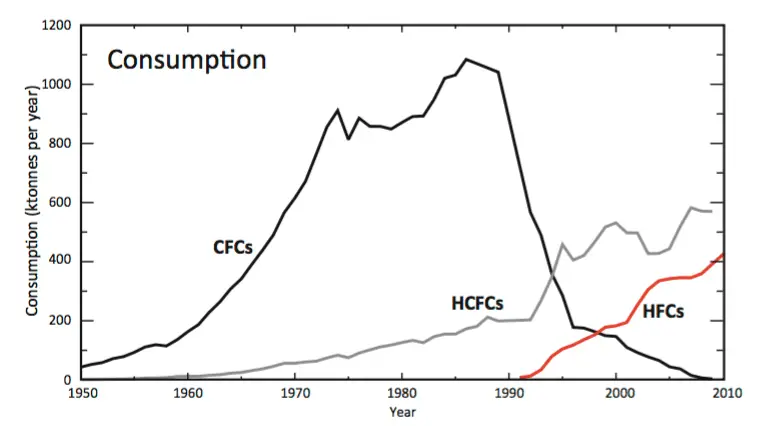
Credit: UNEP
Known as "super greenhouse gases," it was feared that soaring use of HFCs, combined with their high global warming potential, could undercut the benefits expected from the reduction of other greenhouse gases such as carbon dioxide and methane. If left unchecked, it was calculated that HFCs could add a potentially disastrous 0.5°C to global average temperatures by the end of the 21st century.*
Unlike other greenhouse gases in the 2015 Paris Agreement, HFCs had other international negotiations. In September 2016, the New York Declaration urged a global reduction in the use of HFCs. In October 2016, negotiators from 170 nations meeting at the summit of the UN Environment Programme in Kigali, Rwanda, reached a legally-binding accord to phase out hydrofluorocarbons (HFCs) in an amendment to the original Montreal Protocol.*
While hailed as a major achievement for international diplomacy, there were significant differences on the timing and schedule of reductions. The final agreement would see the richest countries starting the process in 2019. Over 100 developing nations would follow in 2024. However, a small group of countries argued for and secured a later start, insisting their economies needed time to grow. Among this group was India, the world's third largest emitter of greenhouse gases and a region with surging demand for air conditioning, due to both rising incomes and increasingly extreme hot weather.
The chemicals needed to replace HFCs were more flammable and toxic – requiring better-trained and better-paid people to design, install and maintain equipment such as air conditioners safely and correctly. In addition, new technologies were required to capture and store HFC in some applications. India's Council on Energy, Environment and Water estimated that the total cost of phasing out HFCs in all homes, workplaces and vehicles could reach up to $38 billion.
India, along with Pakistan and a number of Gulf states, agreed to "freeze" their use of HFCs by 2028. This plateau would be followed by steep reductions from 2031 onwards,* leading to the vast majority of HFCs being eliminated by the late 2040s.*

Much of Bangkok is being abandoned due to flooding
Bangkok, with a population of over 12 million, has been sinking underwater for decades. By the early 2030s, it is facing a disaster of epic scale, with much of the city being abandoned.*
This has occurred for various different reasons. First and foremost, the city is built on clay. When originally settled, the region was just swampy coastline, but today it is covered by skyscrapers, highways and urban development. The enormous weight of all this concrete and steel has been pushing down on the soft clay beneath, causing the soils to descend by up to 5.3cm per year. By 2010, part of the megalopolis was already under sea level, a trend that would only become worse in the following decades.
The illegal tapping of groundwater has been another major factor. Many of the city's residents have been continuously pumping up groundwater – both for their own use and to sell as a commodity – removing a natural layer and resulting in further destabilisation of the soil.
Rising sea levels due to global warming have been yet another factor, eroding the coastline at a rate of 4cm a year, while the increasing severity of monsoon rains has led to longer and more devastating floods.
The explosive growth of Bangkok in recent decades (making it one of the fastest growing places in southeast Asia) has dealt a serious blow to the city's infrastructure. Areas of land that had in the early 20th century been used to absorb flood waters had vast suburbs and business districts built over them. Canals were filled in to make way for the rapid urbanisation of the Chao Praya River Delta. The weight of the city grew and grew, to the point where the soft soil it was built upon could simply no longer support it.
By the early 2030s, large portions of the megalopolis are well below sea level. The government's response during this time has proven inadequate, a lack of clear policy doing little to help the overall situation,* while sea walls have been almost useless due to increasing erosion of the shore. The lowering of the city, combined with rising sea levels (over 20cm higher than in 2000), has resulted in whole districts of Bangkok being permanently abandoned. Over a million buildings, the majority residential, are rendered uninhabitable, forcing their occupants to move further inland.
Many areas which have yet to be fully claimed by the sea have also been evacuated, as the regularity of flooding proved too costly for many. Shantytowns and refugee camps are forming outside the city, while the government struggles to adjust as the capital sinks. Thailand as a whole is going through a period of almost unimaginable stress at this time, a result of such huge population displacement. The political, economic and social upheaval in the region is having a significant impact on global GDP.
Efforts are underway to save Bangkok's numerous historical monuments and artifacts, with some temples being moved inland and reconstructed in their entirety. Due to the scale of this disaster, however, much is lost.
In the coming years, the situation for Bangkok will only worsen as more and more of the city is permanently flooded. By the end of this century, the entire city will be abandoned.*

Global reserves of lead are running out
Lead is a carbon group element with high density, malleability, softness and ductility. Metallic lead is relatively rare in the Earth's crust, and so is usually processed from zinc, silver and copper ores. Like silver, lead has been in use by humans for thousands of years. It was widely exploited by the Roman empire and played a large role in the industrial revolution. World production doubled from 1850 to 1900, doubled again from 1900 to 1950, then doubled yet again from 1950 to 2000.*
Due to its high density, it has often been used as a weight or ballast, as well as radiation shielding. It is also used in firearms and other weaponry. The bulk of lead is used in producing car batteries and similar, as well as in electrodes and high voltage wires. The primary producers are China, Australia, the United States, Canada and Kazakhstan.
Lead is also a pollutant and can be hazardous to human health, being infamous for its older uses in paint and fuels. From the 18th to 21st centuries, environmental levels of lead increased more than 1,000-fold.* In terms of numbers of people exposed and the public health impact, it became one of the largest environmental medicine problems. Although regulations from the 1970s began to reduce the lead content in products and greatly cut exposure in the developed world, many developing countries still allowed its use.
By the early 2030s, most reserves of lead are beginning to be exhausted.** Much of the recent increase in demand has come from China's growing automobile sector. Because about half of the supply comes from recycled scrap, improved recycling programs are able to carry demand in the short term. Fortunately, lead has ready alternatives for most of its uses including zinc, copper, iron and tungsten. However, some of these metals will soon be facing their own shortages too, necessitating the production of artificial replacements. Because of this, the 2030s sees an acceleration of global recycling efforts in order to avert a resource crunch.

Perennial wheat and corn are becoming profitable
In traditional agriculture, all major grain crops have been "annuals", or short-lived perennials grown as annuals – surviving for just one growing season. They die off once harvested, and then a brand new crop must be planted to take their place. This requires vast amounts of fuel, fertilizer, herbicides and pesticides – causing soil erosion, acidification and disrupting both the nitrogen and carbon cycles.
Between 1600 and 2000 AD, the United States lost around one-third of its topsoil. Worldwide, soil erosion was putting the livelihoods of nearly a billion people at risk by the early 21st century.* More than a quarter of Earth's land surface had been converted for agricultural use, with more land converted since 1950 than in the previous 150 years. This situation was being exacerbated by rapid population growth,* demand for meat products in emerging economies, increased production of biofuels,* along with climate change and peak phosphorus* looming on the horizon.
Genetic engineering had emerged as an important tool in crop management. Among the more notable advances occurred in 2017, when BioCassava Plus received regulatory approval, giving a huge boost to farming in Africa.* By the early 2030s,** this has been followed by an even greater breakthrough – perennial wheat and corn – becoming profitable after many years of development.
Perennial grain crops provide a revolution in agriculture. By growing continuously for two or more years, they are far more efficient than traditional annual crops, requiring less fuel, fertilizer, herbicides and pesticides. They can store more carbon, maintain better soil quality and water content, and manage nutrients better, thanks to their deeper root systems.
The deciphering of bread wheat's genetic code in the early 2010s* helped in paving the way towards a new generation of perennial crops. The rate of increase in wheat yields, having been in decline since 1980, is now beginning to increase again. However, agriculture will face a new set of challenges later this decade as the effects of climate change begin to accelerate markedly.*
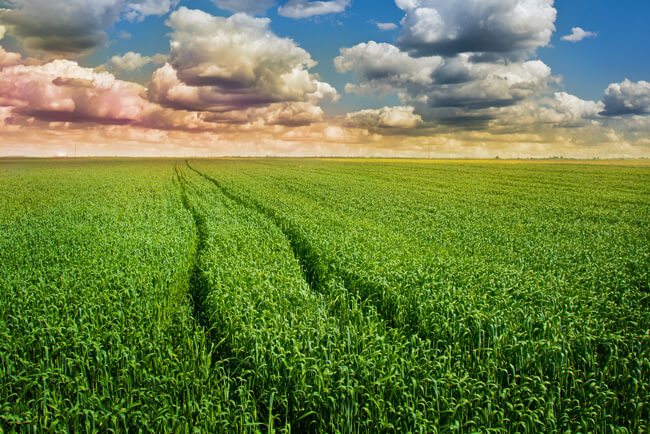
Web 4.0 is transforming the Internet landscape
Further convergence of the online and physical worlds has led to the emergence of "Web 4.0" – the next generation of internet. Semantic analysing programs, having evolved into stronger AI, now perform a huge range of automated tasks for business, government and consumers. Running on massively parallel networks, these applications hunt for textual and visual data – combining the most subtle capabilities of humans (such as pattern recognition) with ways in which machines are already vastly *
In addition to serving as highly advanced search engines, they are playing a major function in the real world – gathering information from the array of sensors, cameras and other tracking devices now present in the environment, on vehicles, and even on people themselves.
Although privacy and civil liberties issues are being raised, this new generation of IT promises to bring enormous benefits to society. Crimes are faster and easier to solve thanks to these intelligent virtual agents; transport and logistics are smoother and more efficient; resources can be managed and distributed more accurately.
In addition, practically every physical document in existence has now been digitally encoded, backed up and archived online. This includes full copies of all books, journals, manuscripts and other literature ever published – forming a complete repository of human knowledge going back thousands of years. These documents can be retrieved and analysed using real-time speech commands, translated from any of the world's 6,000 languages and accessed via 3D holographic imaging.
Web 4.0 is also democratising the Internet more than ever before. News agencies are finding themselves increasingly outmoded by bloggers and other social media when it comes to speed and accuracy of information.
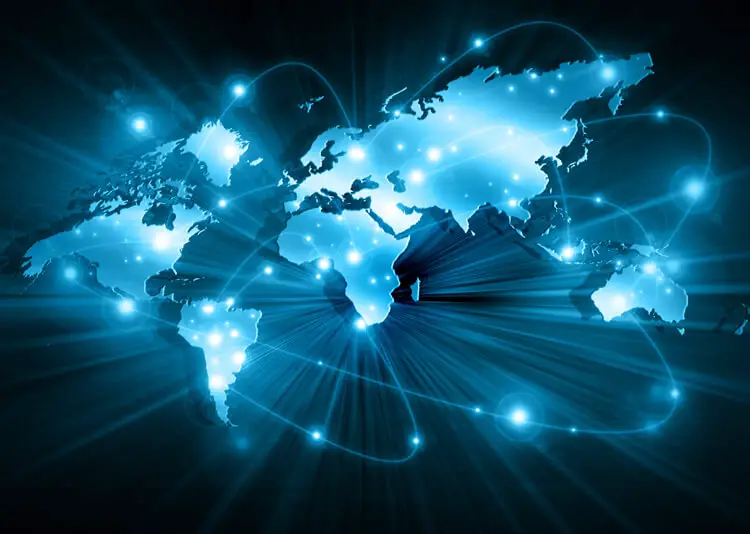
Stem cell pharmacies are commonplace
Stem cell pharmacies are now a fairly common experience in the developed world, offering walk-in diagnosis, stem-cell collection and banking services for use in future medical crises. Affordable, personalised and targeted treatments are becoming available *
Married couples are a minority in the UK
By now, marriage in the UK has been reduced to a lifestyle choice enjoyed by a minority, rather than an essential institution of society. The married population has shrunk from almost 50% of adults in 2009, to just 41% now.* This trend began in the 1980s. Increasing pressures of work and money, together with the general stresses of the outside world (geopolitical, social and economic), are putting ever-greater strain on couples. The decline of religious institutions has also played a part. Unmarried partnerships no longer carry
In addition, increasing numbers of people either working at home alone, or living with their parents, are making it difficult for some to meet potential partners. Another contributory factor is an explosion in the use of virtual reality and other technologies leading to increased isolation of the individual. People of all ages spend increasingly large amounts of their time engaged in highly immersive online experiences, requiring little or no interaction with the outside world.
Of those who are married, the number of children per couple has declined – and not just in the UK, but other Western societies too. Combined with increasing numbers of Muslim immigrants (who have higher numbers of children), this is significantly altering the demographic balance.

Chocolate is becoming a rare luxury
Chocolate products have become alarmingly expensive, with individual bars costing upwards of $10. Drought, soil depletion and diminishing harvests in Africa – where two-thirds of the world's cocoa is produced – have led to soaring prices. Cocoa is also competing for agricultural space with other commodities like palm oil, which is increasingly in demand for biofuels. Poor pay and working conditions have also been a factor. Many young farmers are now abandoning their lands and heading to the cities, in search of better and more highly-paid jobs.*

« 2030 |
⇡ Back to top ⇡ |
2032 » |
If you enjoy our content, please consider sharing it:
References
1 Cargo sous terrain commences implementation, Cargo Sous Terrain (official website):
https://www.cst.ch/en/cargo-sous-terrain-commences-implementation/
Accessed 26th August 2022.
2 What is CST?, Cargo Sous Terrain (official website):
https://www.cst.ch/en/what-is-cst/
Accessed 26th August 2022.
3 Switzerland Moves Ahead With Underground Autonomous Cargo Delivery, IEEE Spectrum:
https://spectrum.ieee.org/cargo-sous-terrain
Accessed 26th August 2022.
4 Jupiter Icy Moons Explorer, Wikipedia:
https://en.wikipedia.org/wiki/Jupiter_Icy_Moons_Explorer
Accessed 14th April 2023.
5 This week in The History of AI at AIWS.net – Marvin Minsky and Dean Edmonds built SNARC, the first artificial neural network, AIWS.net:
https://aiws.net/the-history-of-ai/this-week-in-the-history-of-ai-at-aiws-net-marvin-minsky-and-dean-edmonds-built-snarc-the-first-artificial-neural-network/
Accessed 9th August 2023.
6 This Person Does Not Exist:
https://thispersondoesnotexist.com/
Accessed 9th August 2023.
7 AI's Impact on Hollywood, Peter Diamandis, YouTube:
https://www.youtube.com/watch?v=GLL4eyd1xUw
Accessed 9th August 2023.
8 $1 trillion mark exceeded in 2031; $1.3 trillion in 2032:
See
Generative AI to Become a $1.3 Trillion Market by 2032, Research Finds, Bloomberg:
https://www.bloomberg.com/company/press/generative-ai-to-become-a-1-3-trillion-market-by-2032-research-finds/
Accessed 9th August 2023.
9 NASA plans to retire the International Space Station by 2031 by crashing it into the Pacific Ocean, CNN:
https://edition.cnn.com/2022/02/02/world/nasa-international-space-station-retire-iss-scn/index.html
Accessed 23rd February 2022.
10 "I think Morocco represents the best opportunity to get the European continent away from the dependency it has today on Russian gas."
See Can Morocco solve Europe's energy crisis?, BBC News:
https://www.bbc.com/news/business-65415529
Accessed 4th May 2023.
11 Answer to UK's energy needs is blowing in the Moroccan wind, AGBI:
https://www.agbi.com/analysis/morocco-uk-wind-energy/
Accessed 4th May 2023.
12 The biggest climate change story in the world this week is quietly playing out in Rwanda, Vox:
http://www.vox.com/energy-and-environment/2016/10/12/13250202/hfcs-air-conditioning-montreal-protocol
Accessed 18th October 2016.
13 Kigali makes history with hydrofluorocarbons freeze, The Hindu:
http://www.thehindu.com/sci-tech/energy-and-environment/countries-agree-in-kigali-to-phase-out-85-of-potent-greenhouse-gas-by-2045/article9223509.ece
Accessed 18th October 2016.
14 Emerging Climate Accord Could Push A/C Out of Sweltering India's Reach, The New York Times:
http://www.nytimes.com/2016/10/13/world/asia/india-air-conditioning.html
Accessed 18th October 2016.
15 Countries agree to curb powerful greenhouse gases in largest climate breakthrough since Paris, UNEP:
http://www.unep.org/newscentre/default.aspx?DocumentID=27086&ArticleID=36283
Accessed 18th October 2016.
16 Thailand, Sinking: Parts of Bangkok Could Be Underwater in 2030, TIME:
http://www.time.com/time/world/article/0,8599,2084358,00.html
Accessed 22nd December 2011.
17 Bangkok at risk of sinking into the sea, The Guardian:
http://www.guardian.co.uk/environment/2011/sep/06/bangkok-thailand-risks-steadily-sinking
Accessed 22nd December 2011.
18 Bangkok is sinking, Global Post:
http://www.globalpost.com/dispatch/thailand/090202/bangkok-sinking-1
Accessed 22nd December 2011.
19 Lead Statistics, US Geological Survey:
http://minerals.usgs.gov/ds/2005/140/lead.pdf
Accessed 5th July 2012.
20 Uses of Lead, Geology.com:
http://geology.com/usgs/lead/
Accessed 5th July 2012.
21 Earth's natural wealth: an audit, New Scientist:
http://www.science.org.au/nova/newscientist/027ns_005.htm
Accessed 5th July 2012.
22 5 Valuable Metals That Could Vanish by 2055, Scribol:
http://scribol.com/environment/waste-and-recycling/5-valuable-metals-that-could-vanish-by-2055/
Accessed
31st December 2017.
23 Restoring the land, FAO:
http://www.fao.org/docrep/u8480e/U8480E0D.HTM
Accessed 19th June 2013.
24 Global population, Future Timeline – Data & trends:
https://www.futuretimeline.net/data-trends/1.htm
Accessed 7th August 2022.
25 Biofuel, Wikipedia:
https://en.wikipedia.org/wiki/Biofuel
Accessed 9th February 2016.
26 See 2033.
27 See 2017.
28 Article from 2007: "It is expected to take at least twenty-five years to achieve profitable, productive perennial grain crops."
Perennial Grain Cropping Research: Frequently Asked Questions, The Land Institute:
http://www.landinstitute.org/vnews/display.v/ART/2007/03/15/45fac90d9668c
Accessed 19th June 2013.
29 By 2030, Perennial Grains Could Revolutionize Agriculture, Save Humanity, PopSci:
http://www.popsci.com/science/article/2010-06/2030-perennial-grains-could-revolutionize-agriculture-save-humanity
Accessed 19th June 2013.
30 Major breakthrough in deciphering bread wheat's genetic code, Future Timeline Blog:
https://www.futuretimeline.net/blog/2012/12/1-2.htm
Accessed 19th June 2013.
31 See 2035-2040.
32 Web 4.0,Trip Down the Rabbit Hole or Brave New World?, zmogo.com:
http://www.zmogo.com/web/web-40trip-down-the-rabbit-hole-or-brave-new-world.
Accessed 7th June 2009.
33 Stem
cell 'pharmacies' in the high street in 20 years, predicts expert, Daily Telegraph:
http://www.telegraph.co.uk/news/science/science-news/7883978/Stem-cell-pharmacies-in-the-high-street-in-20-years-predicts-expert.html
Accessed 31st October 2010.
34 Married
couples to be minority within 20 years, Daily Telegraph:
http://www.telegraph.co.uk/news/uknews/5086491/Married-couples-to-be-minority-within-20-years.html
Accessed 4th April 2009.
35 "In
20 years, chocolate will be like caviar. It will become so rare and so
"
See Chocolate: Worth its weight in gold?, The Independent:
http://www.independent.co.uk/life-style/food-and-drink/features/chocolate-worth-its-weight-in-gold-2127874.html
Accessed 7th January 2011.
![[+]](https://www.futuretimeline.net/images/buttons/expand-symbol.gif)







